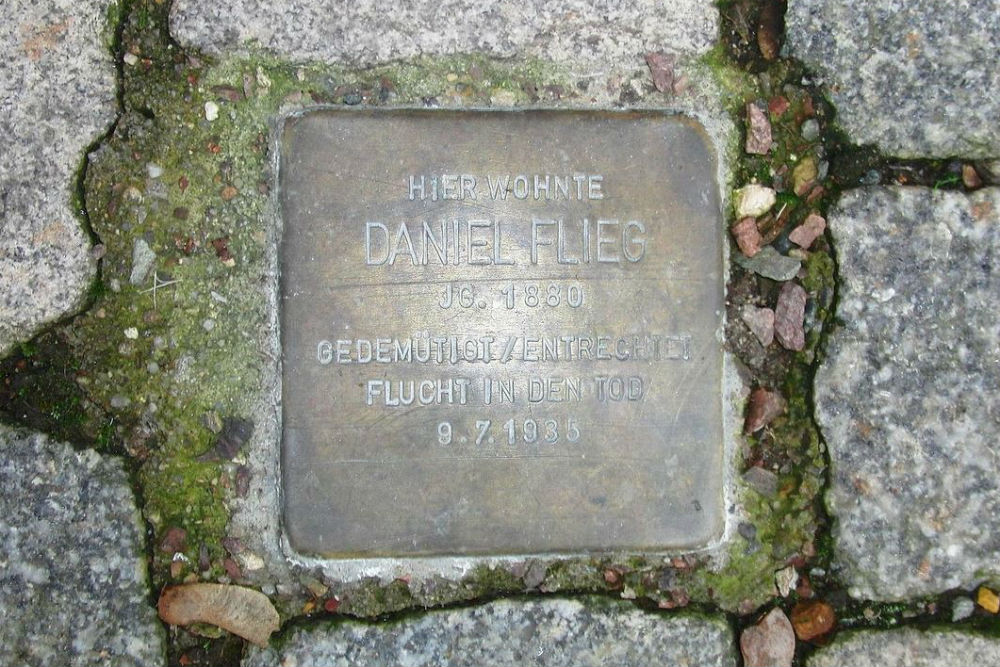Stumbling Stone Gerhart-Hauptmann-Platz 13
This memorial plaque (Stolperstein or stumbling stone) commemorates:
* Daniel Flieg, born 1880, humiliated / deprived of rights, killed himself 9 July 1935.
Daniel Kleig moved to Chemnitz as a salesman when he was 32. He then became co-owner of a company "B Eiseberg & Sohn" and married his boss’s daughter, Elsa Primo. They had two sons – Helmut (born 1913) and Werner (born 1918). He was active in his company, in the Saxonia Lodge (B’nai B’rith) for Jewish males, and he supported the arts in Chemnitz.
In 1933 Daniel was arrested instead of his son (who was in Berlin) and was detailed in Sachsenburg, a concentration camp in operation near Chemnitz from 1933-1937 for punishing dissidents. He was not well when he entered; he returned home several weeks later a broken man. He and Elsa divorced in 1935. Daniel killed himself that same year.
Son Helmut emigrated to the US and survived until age 82; he was a writer known as Stefan Heym. Son Werner survived the war but killed himself at age 51 in the US.
Stolpersteine for Daniel’s sister and her husband – Regina and Hans Hartmann – are at Hübschmannstraße 26 in Chemnitz.
"Stolpersteine" is an art project for Europe by Gunter Demnig to commemorate victims of National Socialism (Nazism). Stolpersteine (stumbling stones) are small, 10x10cm brass plaques placed in the pavement in front of the last voluntary residence of (mostly Jewish) victims who were murdered by the Nazis. Each plaque is engraved with the victim’s name, date of birth, and place (mostly a concentration camp) and date of death. By doing this, Gunter Demnig gives an individual memorial to each victim. One stone, one name, one person. He cites the Talmud: "A human being is forgotten only when his or her name is forgotten."
For more information and pictures, please visit Stolpersteine Chemnitz (in German).
Do you have more information about this location? Inform us!
Source
- Text: Fedor de Vries & Anne Palmer
- Photos: Treeem
- "Stolperstein für Daniel Flieg"
- MyHeritage.com: Elsa Flieg
- Stolpersteine.eu
Nearby
Monument
- Memorial Old Synagogue Chemnitz - Chemnitz
- Memorial Victims National-Socialism - Chemnitz
- Memorial Perished German Prisoners-of-War - Chemnitz





